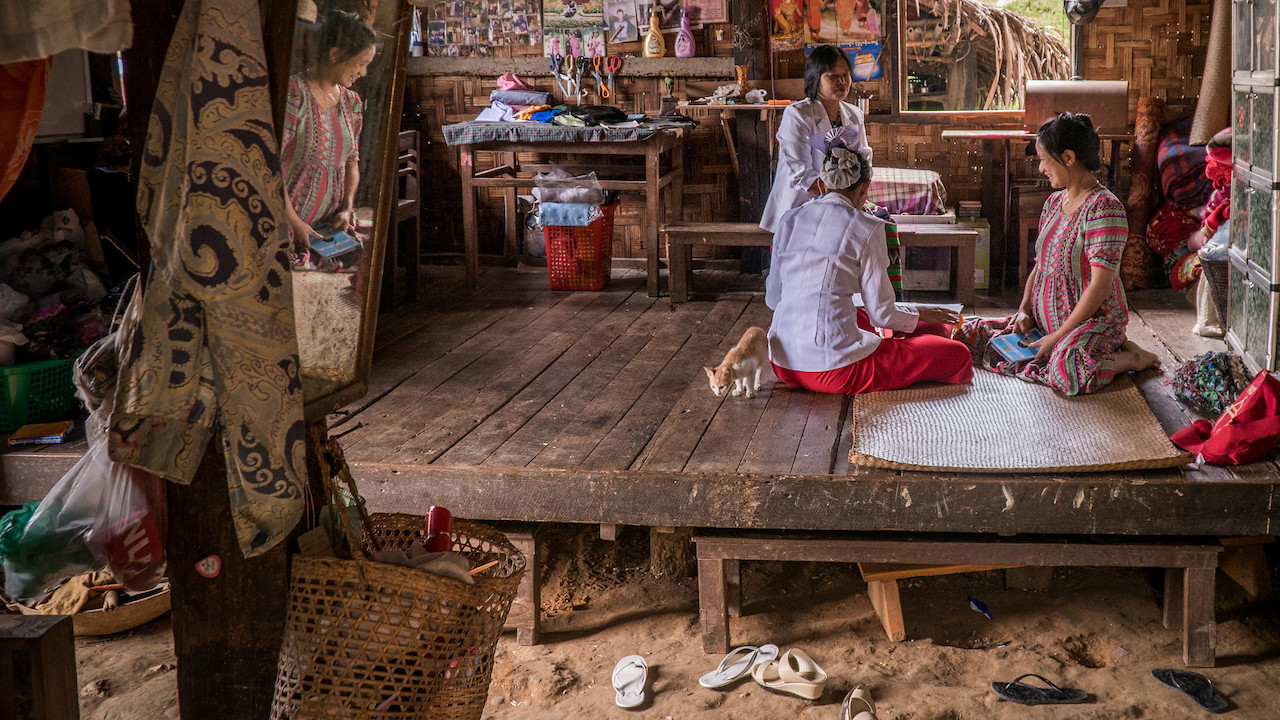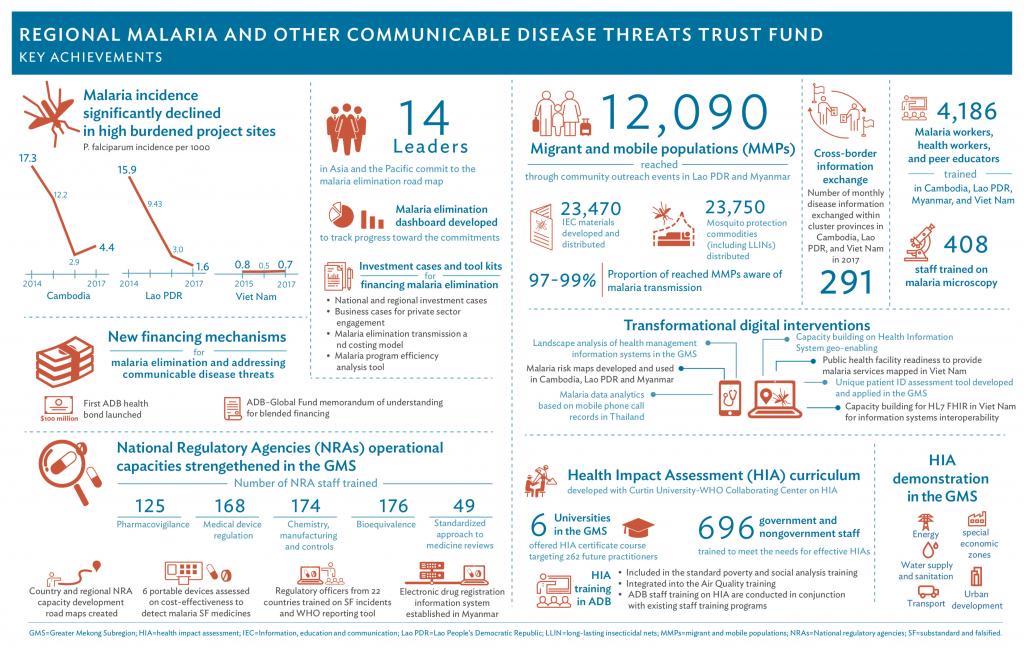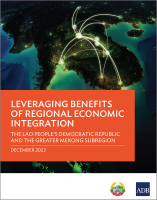
Myanmar has the highest number of malaria cases in the Greater Mekong Subregion. Photo credit: ADB.
Financial resource mobilization by the Malaria Trust Fund has helped eradicate malaria and build strong foundations for health systems in the Greater Mekong Subregion.
This article is published in collaboration with Development Asia.
Drug-resistant malaria was gaining ground in the Greater Mekong Subregion (GMS) in the last decade. A definitive and growing drug resistance detected in Cambodia, the Lao People’s Democratic Republic, Myanmar, Thailand, and Viet Nam threatened to undermine gains made against the disease.
In December 2013, the Asian Development Bank (ADB) established the Regional Malaria and Other Communicable Disease Threats Trust Fund (RMTF) to control the spread of drug-resistant malaria in the GMS and eliminate the threat of malaria and other communicable diseases by 2030. Contributions from the governments of Australia, Canada, and the United Kingdom generated a $27.6-million investment in strategic health interventions and strengthening health systems in GMS countries. It helped develop multi-country, cross-border, and multi-sector responses to address the root causes of drug-resistant malaria and other communicable disease threats.
Project Snapshot
- Projects
- 47278-001: Strengthening Regional Response to Malaria and Other Communicable Diseases in Asia and the Pacific
- 48315-001: Awareness Raising to Adopt Action for Malaria Elimination in Asia Pacific
- 48446-001: Malaria and Communicable Diseases Control in the Greater Mekong Subregion
- 48001-001: Results for Malaria Elimination and Control of Communicable Disease Threats in Asia and the Pacific
- 47197-001: Malaria and Dengue Risk Mapping and Response Planning in the Greater Mekong Subregion
- 41505-012: Cambodia: Second Greater Mekong Subregion Regional Communicable Diseases Control Project
- 41507-012: Lao People's Democratic Republic: Second Greater Mekong Subregion Regional Communicable Diseases Control Project
- 41508-013: Viet Nam: Second Greater Mekong Subregion Regional Communicable Diseases Control Project
- Dates
December 2013: Approved
June 2018: Completed
- Cost
$27.6 million: Amount
- Institutions and Stakeholders
- United Kingdom Department of International Development (DFID)
- Australian Department for Foreign Affairs and Trade (DFAT)
- Canadian Department of Foreign Affairs and Trade and Development (DFTAD)
Challenges
In 2016, the Asia-Pacific region had an estimated 16.2 million malaria cases, of which 30,300 ended up fatal, according to estimates of the World Health Organization.
High concentrations of drug resistance are common in the forest borders of Cambodia, Myanmar, Thailand, and Viet Nam. Malaria in Myanmar is highest, and the country could be the gateway of drug-resistant malaria into South Asia and Africa.
Malaria detection and treatment also needs vast improvements, especially for mobile and migrant populations. Lack of timely and comprehensive disease surveillance across countries, a proliferation of low quality and fake medicines, and lack of capacity of national regulatory agencies and medical institutions hamper the countries’ efforts to contain and eliminate malaria.
A steady flow of flexible financing is vital for cross-border initiatives, multi-sector cooperation, and multi-country interventions.
Solutions
Multi-country, Cross-border, and Multi-sector Solutions.
ADB has a solid track record for the successful management of trust funds for sector specific infrastructure projects and has managed dozens of trust funds that funnel donor resources into one area with great catalytic success. The RMTF was established under the ADB Health Financing Partnership Facility. Building on ADB’s experience, communicable diseases control and malaria elimination was a strategic entry point for future health trust fund interventions.
The RMTF’s thrusts were aligned with the 2015–2030 Malaria Elimination Strategy developed in the GMS supported by the World Health Organization (WHO). The strategy aimed to eliminate malaria by 2030, reduce malaria in high transmission areas and maintain malaria-free status, and prevent reintroduction once transmission has been interrupted. RMTF interventions worked towards:
- Strengthening regional leadership through support for regional cooperation, knowledge development, and knowledge sharing, building towards a malaria-free region by 2030;
- Increasing financing through pooling public and private sector finance for malaria elimination, particularly for scalable initiatives that can help strengthen health systems and support countries to attain universal health coverage;
- Countering low quality medicine, which are a major contributor to drug resistance in the GMS, through stronger national drug regulation;
- Adopting technologies for a more robust digital health infrastructure for malaria surveillance and producing essential data for planning, monitoring, and evaluating interventions for malaria and other communicable diseases;
- Improving national capacity to detect, test, treat, and track malaria and other communicable disease cases, particularly in border areas; and
- Addressing malaria in development through improved practice of health impact assessments to include malaria and communicable disease prevention in large commercial and development projects.

Numbers and facts14 leaders in Asia and the Pacific commit to the malaria elimination road map From $90 million (2013) to more than $300 million increased domestic funding for malaria elimination in the GMS $124 million available loan financing for eligible GMS countries through the first ADB health bond 6 universities in the GMS offered Health Impact Assessment (HIA) certificate course targeting 262 future practitioners 696 government and nongovernment staff trained to meet the needs of effective health impact assessments 692 staff of national regulatory agencies trained in various areas such as pharmacovigilance, medical device regulation, bioequivalence, standardized approach to medicine reviews, and in chemistry, manufacturing, and control |
Results
No Room for Malaria
The RMTF’s flexibility and adaptability allowed for the successful delivery of tangible results, despite the timing, capacity, and funding challenges. It offered opportunities for government, development agencies, academic institutions, and the private sector to work together not only against malaria but also to ensure that the disease does not go beyond the GMS through building a more robust health sector in the region.
- Stronger Leadership
The RMTF has allocated $750,000 to the organization and initial operations of the Asia Pacific Leaders Malaria Alliance (APLMA), which has been effective in mobilizing governments and resources to create dialogue and identify opportunities to support governments, donors, and other partners. APLMA developed the malaria elimination dashboard, which will be used by 20 countries within and beyond the GMS to track progress towards malaria elimination and provide oversight of funding gaps. With resources from the Bill and Melinda Gates Foundation and the Australian Department for Foreign Affairs and Trade, APLMA has become an independent sustainable organization based in Singapore.
- Innovative finance
The RMTF was successful in leveraging additional resources for malaria elimination. A total of $52.5 million is available for health security measures from the Asia Development Fund and $100 million issued to support lending to countries for health financing through the first ADB health bond. More importantly, the RMTF developed the collaboration framework for blended finance mechanisms,” a multi-partner financing base to increase government access to health financing, support risk sharing, and, amplify shared public health interests. Blended finance can leverage donor funding, improve coordination, finance long-term program, accelerate results, harmonize funding priorities, and integrate investments.
- Improved drug regulation
The RMTF worked in four GMS countries to strengthen national drug regulation capacity. A regional regulatory system-profiling instrument was developed in line with a regional capacity development roadmap linked to ASEAN convergence of regulatory practices, curriculum development on pharmacovigilance, medical device regulation and good regulation practices. All countries have now improved drug regulation capacity and received training on the WHO Global Surveillance mechanism for substandard and falsified medicines to improve detection and reporting.
- Use of ICT
RMTF supported country-level management information systems assessment and geo-enabling of health information systems, among other initiatives. A Digital Health Impact Framework, a Health ID toolkit, an eHealth Governance Framework, and a Health GeoLab were developed. All GMS countries received capacity building and support in the use and implementation of all these tools.
- Improved national capacities to fight malaria
RMTF provided capacity building, equipment, and facilities that boosted the efforts of national food and drug authorities on malaria diagnostic testing, surveillance, and elimination. Malaria elimination programs targeting migrant and mobile populations, which are a source of transmission and malaria resistance, fostered cross-border collaboration.
- Demonstrated use of Health Impact Assessments (HIAs)
The RMTF has increased capacity in applying HIAs to consider determinants of health and communicable diseases in infrastructure projects. The development of the Network on Health Impact Assessment in Asia Pacific, the HIA framework for special economic zones in the GMS, the HIA Sourcebook and its associated curriculum, training materials, and relevant knowledge products have raised the importance of HIAs to senior levels of government.
Lessons
The RMTF supported ambitious and complex projects in a time-bound, multi-country, cross-border, multi-sector context and across both specific disease interventions and regional health system strengthening. Some of the lessons it offered are:
Improve timeliness of disbursement of resources. While the RMTF offered flexible financing, not all resources were disbursed as planned. Changes in donor funding commitment resulted in the re-design of some of the project components and intense scrutiny from donor partners. This helped to sharpen the RMTF’s focus, funds management, and accountability. The fund developed the “accounting for results” dashboards that helped to communicate the value for money of the fund.
Explore the limits of available technology. The inclusion of activities, particularly on information systems not contemplated at the outset, but proven to have been essential to the attainment of some of the outcomes, was a strategic invention in the RMTF’s implementation. For example, through GIS mapping, a harmonized malaria registry was developed and proved to be an essential tool for governments to have.
This article was first published by Development Asia on 29 May 2019.
Resources
Regional Malaria and Other Communicable Disease Threats Trust Fund: Final Report
Publication: Malaria Elimination
The expert behind the article is Susann Roth, Principal Knowledge Sharing & Services Specialist, Sustainable Development & Climate Change Department, Asian Development Bank.

Development Asia
Development Asia is the Asian Development Bank's knowledge collaboration platform for sharing development experience and expertise, best practices, and technologies relevant to the Sustainable Development Goals. We also provide opportunities to interact with experts, policy makers, and other practitioners in related fields.
We are an open community of professionals, government officials, civil society organizations, researchers, and students interested in economic and social development at a national level.

